| SAC Bases: Lincoln
Air Force Base |
|
|
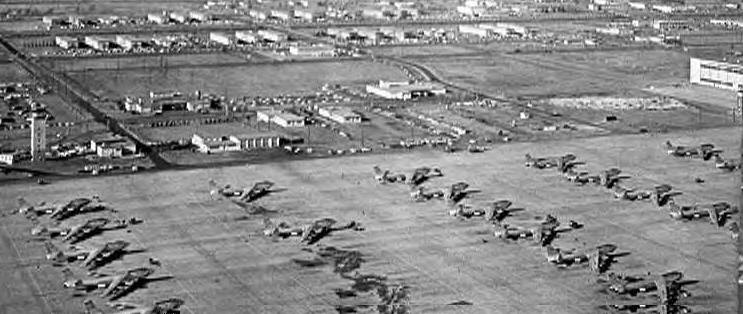 |
Wide-open skies and
flat lands made Lincoln's location synonymous with flying. Charles Lindbergh
was one of many who learned to fly at the Lincoln flight school in 1922.
After his rise to fame, Lincoln's small municipal airport was dedicated as
"Lindbergh Field" in 1930. It was one of the few bases that had two
B-47 wings at the same time.
World War II
Lincoln Army Air field was constructed in 1942 on the
former Lincoln Municipal Airport, and became a key element of the city's
involvement in World War II. The 2,750-acre property was leased to the army
by the City of Lincoln, and the massive project was completed in 17 weeks
with a construction cost of $35 million dollars. The base provided technical
training for aircraft mechanics, basic training for army aviation cadets,
and served as an overseas deployment staging area for bombardment groups and
fighter squadrons. It was one of eleven U.S. Army Air forces graining
centers built in Nebraska during world War II. Over 25,000 aviation
mechanics received training in Lincoln and an additional 40,000 troopers
were processed for combat through the facility. At war's end the airfield
served as a military separation center for aircrews returning from overseas.
It closed in December 1945 and was returned to the City of Lincoln for a
municipal airport.
Strategic Air Command
In 1952 the Strategic Air Command
activated the airfield as Lincoln Air force Base under a joint-use lease
agreement between the US Air Force and the City of Lincoln. It had cost 80
million dollars to re-activate the base. The longest runway is 12,900
ft. long and 200 ft wide. Any aircraft in the world can land on this runway,
even one of the space shuttles. |
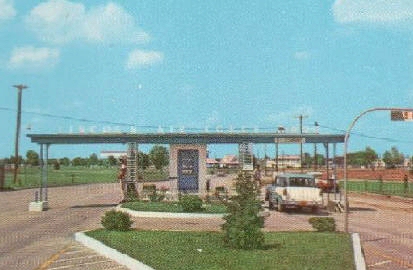 |
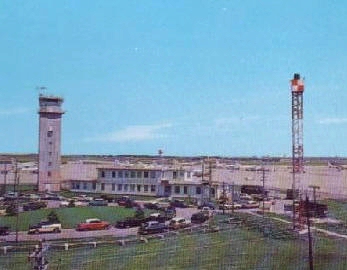 |
| Main Gate, circa 1960 |
Base Operations, circa 1960 |
In 1954, the 98th
and 307th Bomb Wings had completed their tour of duty with the Far Eastern
Air Forces, They were the only heavy bomber wings to participate in
the Korean War. They destroyed all possible strategic targets in only
two months, but were retained by General MacArthur, who used them for
tactical support of ground troops. Upon return to the States, both
veteran wings were assigned to the new Lincoln Air Force Base. During
1955 and 1956, they exchanged their B-29s for the new Boeing B-47E Stratojets. They were combat ready in 1956. The 98th and 307th
Air-Refueling Squadrons were also given
KC-97G Air-Refueling Tankers. The last production KC-97 was sent
to Lincoln. In all around 70 B-47s were stationed along side the 30 or so
KC-97s During 1956 over 6,000 personnel called Lincoln home. Both wings
onducted strategic bombardment training and air refueling operations to meet
SAC's global commitments.
The base was
at its peak from 1960 to 63. Some of the hottest years of the Cold War. The
planes stood on alert during the Berlin Crisis of 61' and Cuban Missile
Crisis of 1962. The planes were ready for their mission, the destruction of
the Soviet Union.
From January
1964 to April 1965, the 98th controlled an Atlas IBM squadron.
Operational sites at both Lincoln and Schilling AFB, Kansas, were originally
slated to receive horizontal launchers. Site selection for three complexes
of three missiles each (3 x 3) was completed in the fall of 1958. In early
1959, a decision to deploy missiles to nine separate sites required
additional site surveys. As these surveys proceeded, Bechtel and Convair
contractors achieved design advances on vertical launchers. |
|
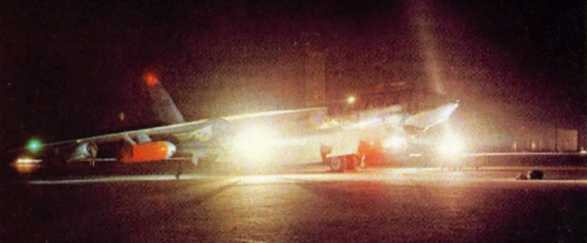
|
On November 27, 1959, Headquarters, United States
Air Force determined that Lincoln and Schilling would receive the silo-lift
configuration. During the subsequent bidding process, the number of silos to
be built was increased to 12. These launchers were sited at Elmwood, Avoca,
Eagle, Nebraska City, Palmyra, Tecumseh, Courtland, Beatrice, Wilber, York,
Seward, and David City. On April 12, 1960, Western Contracting Corporation
earned the contract with a bid of $17.4 million for nine sites. A month
later the contract price increased another $6.6 million to cover
construction costs of three additional sites. Construction began on April
29, 1960.
Difficulties were encountered almost immediately.
On June 13, at a site near Beatrice, builders had to combat sandy soils,
which kept caving in. Two weeks later, miners briefly walked off four sites
over the issue of work conditions. High water tables challenged engineers to
battle a constant flooding problem. However, using the “cut and cover”
method, progress was achieved on installing the 12 separate silos. |
|
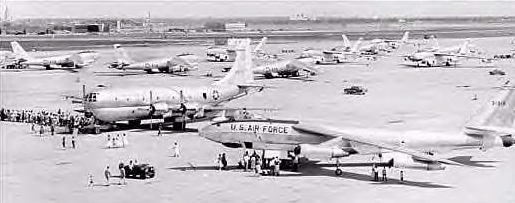
|
With the project one-third complete in October
1960, the Omaha District turned responsibility for construction over to the
Corps of Engineers Ballistic Missile Construction Office (CEBMCO).
Construction reached a peak later that month as some 1,900 workers worked
“around the clock” on a 7-day schedule at 12 separate sites. In February
1961, the President of Western Contracting testified before Congress to
express his frustration with all of the change orders, yet continued
expectations of meeting scheduled deadlines. He stated he expected to lose
$12 million on the project. As a result of the hearings, finger-pointing
began to affix blame for cost overruns at the several ongoing construction
projects.
Construction at Lincoln proved costly in more ways than
money. Seven men died during the building process in separate incidents,
usually due to falls or being struck by objects. The final death occurred
during the late summer of 1961, when a guard was hit by a tornado that
lashed through the Palmyra site.
Besides developing a reputation for high
fatalities, the Lincoln project also gained notoriety for labor unrest. By
late April 1961, the Defense Department reported that Lincoln had suffered
33 strikes causing 1,743 man-days lost. During the following month
politicians expressed rage against the work stoppages. As a result of such
pressure, on May 26, the administration developed a plan that incorporated a
no-strike/no lockout pledge and implemented an ll-man Missile Sites Labor
Commission to settle all disputes.
In June 1962, the Strategic Air Command accepted the
first silos at Lincoln for operational deployment of the Atlas F missile.
Phase Down and Closure |
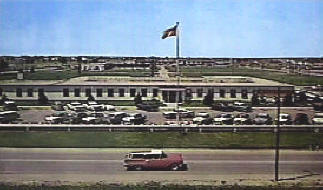 |
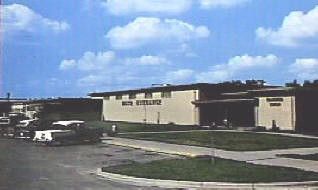 |
| 818 Air Division
Headquarters |
Base Exchange |
|
On May 16, 1964, Secretary of Defense McNamara
directed the accelerated phase-out of Atlas and Titan I ICBMs. Later that
year, the 551st Strategic Missile Squadron received the last Operational
Readiness Inspection (ORI) for such a unit. The Lincoln Atlas F missiles
were deactivated on April 12, 1965, completing the phase-out of this weapon
system.
Meanwhile, the B-47s were being phased out of the SAC
arsenal. In January 1965 the 307th Bomb Wing began phasing
down. It was discontinued and inactivated on March 25, 1965. The 98th
Bomb Wing was inactivated on June 5, 1966 at Lincoln AFB, but activated the
same day at Torrejon Air Base, Spain replacing the 3970th Strategic Wing.
Lincoln returned to its original role, that of a municipal
airport. The Lincoln Air Park West Industrial Park contains over 1,000
acres and was originally the site of the Lincoln Air Force Base, which
closed in 1966. Today, Lincoln Air Park West is owned and operated by the
Lincoln Airport Authority with Industrial Park revenue either returning to
improve and/or expand the Park or to help in support of the operation of the
airfield. Lincoln Municipal Airport is an alternate landing site for
the Space Shuttle, and home base for the Nebraska Air National Guard's 155th
Air Refueling Wing. Air National Guard aircraft land on the same
runways, but their crews & passengers are never de-planed into the Lincoln
Airport Terminal. These aircraft taxi directly to Air Guard facilities.
|
|
